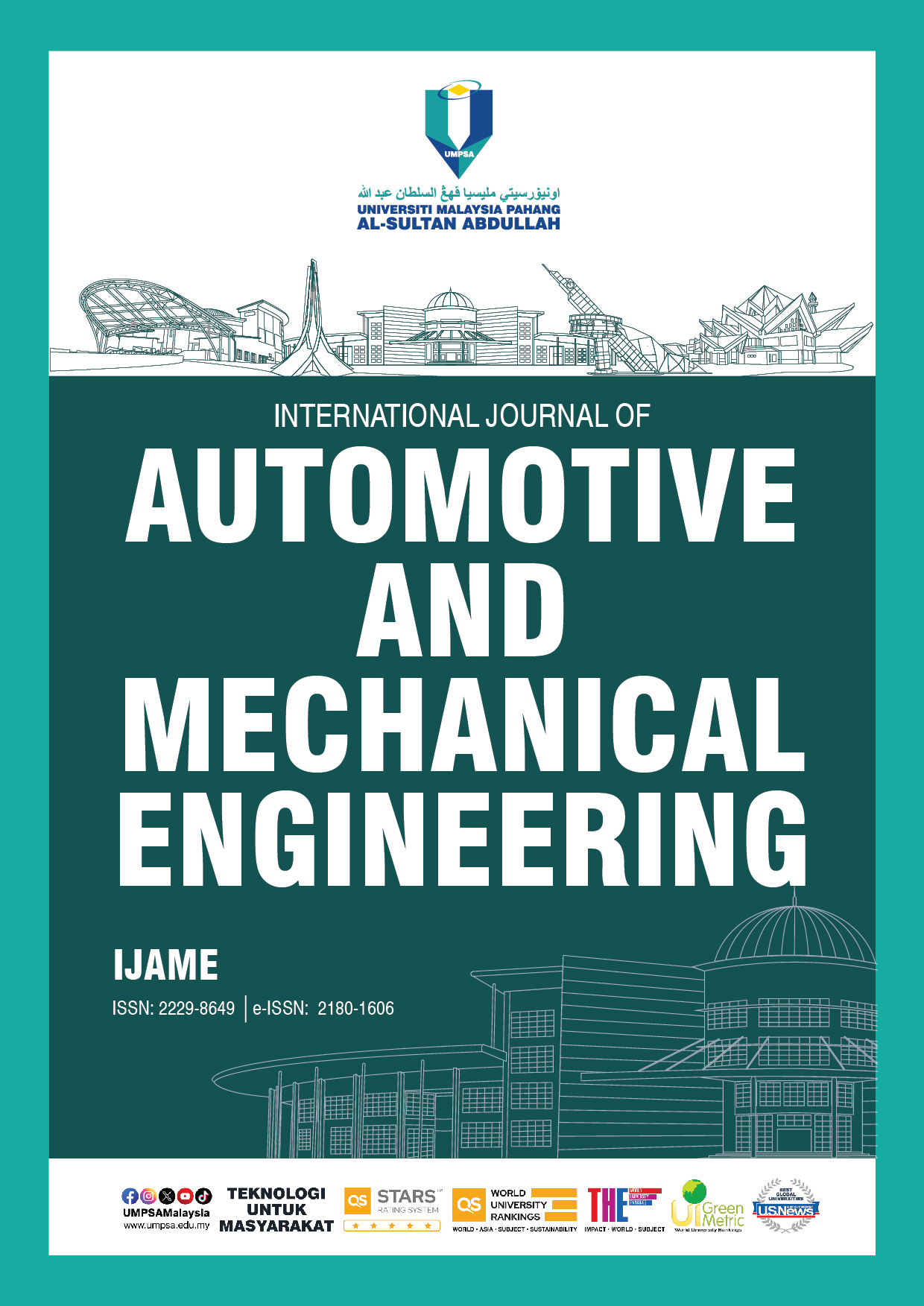Performance and Emission Characteristics of a High-Speed Diesel Engine Using a 20% Palm Oil Ester and Ethyl Alcohol Blend
DOI:
https://doi.org/10.15282/ijame.21.2.2024.15.0878Keywords:
Diesel engine, Ethyl alcohol, Exhaust products, Performance parameters, POE20Abstract
The issue of diesel engine exhausts is expanding to affect human health, while oxygenated fuels have been continuously studied for a healthier environment. Palm oil ester (POE) is applied in Thailand to reduce exhaust products, but its viscosity is thicker than diesel fuel, which may cause injection systems. It has been improved by mixing with diesel, and diesel blended with 20% POE (POE20) is surveyed as an alternative fuel to reduce viscosity. Currently, ethyl alcohols combined with this blend have gained a lot of attention due to improved fuel properties and the alleviation of exhaust products. Therefore, this research studies a diesel engine's performance parameters and pollution products at high speed at 3,000 rpm and various powers when operated with POE20 and combinations of POE20, 5% ethyl acetate, and ethyl alcohol up to 20%. The results indicate that the POE20 had lower engine performance but higher carbon dioxide and nitric oxide than regular diesel. The 10% ethyl alcohol blended with POE20 improved the brake thermal efficiency, similar to regular diesel. However, POE20 mixed with ethyl alcohols by more than 10% remarkably changed performance parameters and pollution products compared with regular diesel and POE20.
Downloads
Published
Issue
Section
License
Copyright (c) 2024 The Author(s)

This work is licensed under a Creative Commons Attribution-NonCommercial 4.0 International License.







